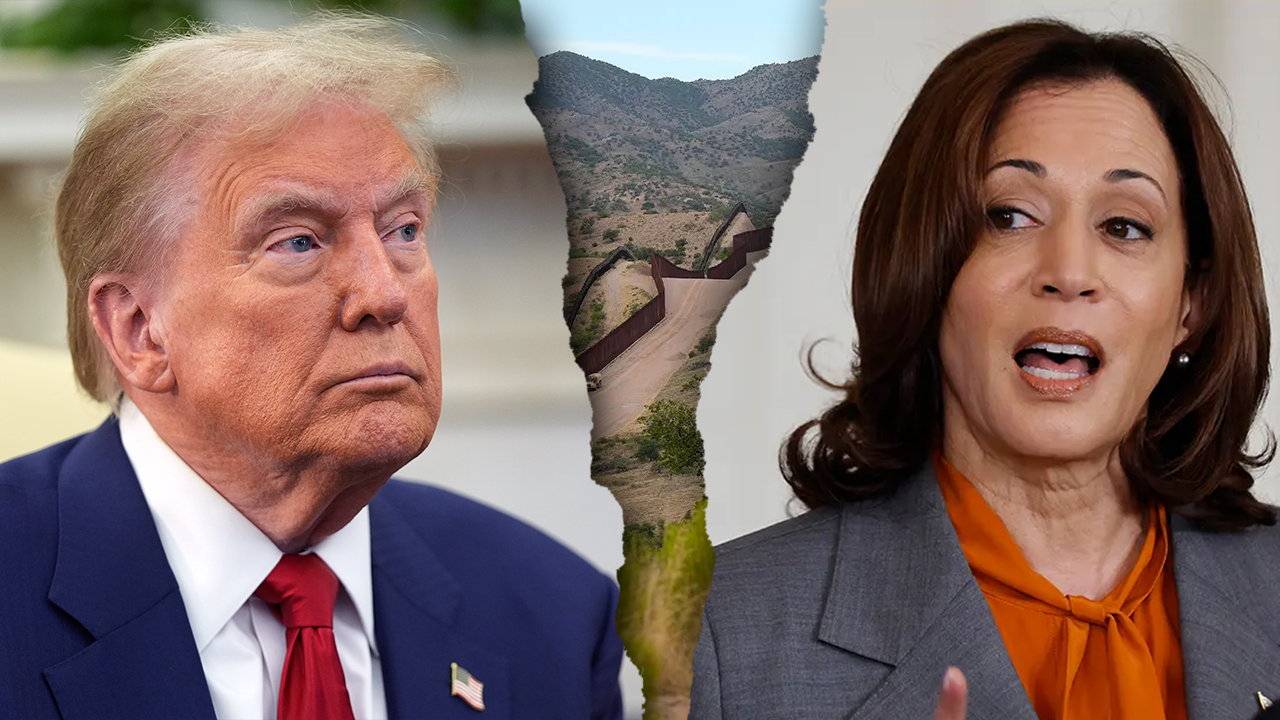Politics
Federal agency in DOGE’s crosshairs played key role in Harris’ strategy to curb migrant crisis

The Biden Administration’s Strategy to Address Root Causes of Migration
The Biden administration launched an ambitious strategy to tackle the root causes of migration at the southern border, focusing on addressing issues such as gang violence, climate change, and poverty in Central America. This effort was rolled out amid a surge in illegal immigration, with the United States Agency for International Development (USAID) playing a pivotal role in distributing funds and implementing programs. Vice President Kamala Harris was tasked with leading diplomatic efforts in Latin America, emphasizing the need to address these underlying issues through a combination of government initiatives and private funding.
USAID, now temporarily frozen due to concerns over misspending, was central to this strategy. In 2021, the agency announced Centroamérica Local, a five-year, $300 million initiative aimed at funding local organizations in El Salvador, Guatemala, and Honduras to address migration drivers. The program focused on fostering sustainable economic growth, improving governance, combating corruption, protecting human rights, and enhancing citizen security. By engaging directly with local communities, USAID sought to create a more stable and equitable region, reducing the push factors that drive migration to the U.S.
Expanding Efforts: New Programs and Investments
Building on the Centroamérica Local initiative, USAID continued to expand its efforts in 2022. The agency announced new programs to combat gender-based violence in Guatemala and Honduras, allocating $6.5 million and $2.7 million, respectively. These investments were part of a broader push to address the social and economic disparities that contribute to migration. Additionally, Vice President Kamala Harris announced a $135 million investment in USAID funding for Guatemala, alongside $170 million for development, economic health, and security assistance.
This announcement also included the expansion of the Central American Service Corps, a program created in 2022 to engage at-risk individuals in volunteer work, employment, and training. By providing opportunities for young people and vulnerable populations, the program aimed to reduce the likelihood of migration. USAID also launched the "Feed the Future" initiative in Guatemala, focusing on agricultural innovation and climate-smart practices to help farmers adapt to environmental challenges. Another program, "Guatemala Biodiversity Conservation," sought to protect ecologically important areas while promoting sustainable development.
Challenges and Criticisms: Thefreeze on USAID Funding
Despite these efforts, USAID faced significant challenges, including concerns over misspending and inefficiency. In recent months, the agency’s operations were halted to conduct a comprehensive review of its funding allocation. While this freeze has limited the agency’s ability to continue its work, the previous investments underscore the scale of its efforts. For example, in 2023, USAID invested over $153 million in Guatemala alone, supporting initiatives such as rural development, climate-resilient infrastructure, and digital governance.
However, the effectiveness of these programs has been subject to debate. Critics argue that the root causes strategy has not yielded sufficient results in reducing migration, while others question the long-term sustainability of the investments. Vice President Harris, who was initially tasked with leading this effort, faced criticism during her presidential campaign for shifting focus from addressing root causes to border security. The tension between these two approaches—addressing the drivers of migration versus enforcing border control—has been a recurring theme in the debate over immigration policy.
A Shift in Strategy: The Trump Administration’s Approach
The Trump administration has been skeptical of the root causes strategy, prioritizing border security and enforcement over international development efforts. Shortly after taking office, President Trump rescinded a 2021 executive order by President Biden that had established a regional framework to address migration. The order had aimed to manage migration flows, provide safe processing for asylum seekers, and rebuild refugee resettlement programs. Trump also revoked an order focused on addressing the impact of climate change on migration, signaling a stark departure from the Biden administration’s approach.
The Trump administration’s actions reflect a broader disagreement over the best way to address migration. While the Biden administration emphasized the need to invest in Central America to reduce push factors, the Trump administration has focused on deterrence and enforcement. This shift highlights the challenges of maintaining a long-term, multi-faceted strategy to address migration, particularly in a politically polarized environment.
Conclusion: The Legacy of USAID’s Efforts and the Path Forward
The Biden administration’s strategy to address the root causes of migration through USAID-funded programs represented a significant effort to tackle the complex drivers of immigration. By investing in local organizations, promoting economic development, and addressing social challenges, the initiative aimed to create a more stable and prosperous Central America. While the strategy faced criticism and challenges, including the recent freeze on USAID funding, its legacy lies in the recognition that migration is a symptom of deeper issues that require sustained attention and investment.
Moving forward, the question remains whether these efforts will continue or be scaled back under the Trump administration. The debate over migration policy underscores the need for a comprehensive approach that balances immediate enforcement with long-term solutions. By learning from the successes and shortcomings of USAID’s initiatives, future policymakers can build on this foundation to create a more humane and effective strategy for addressing migration.


















